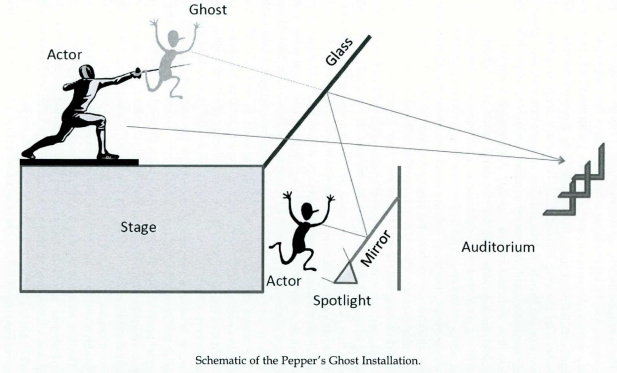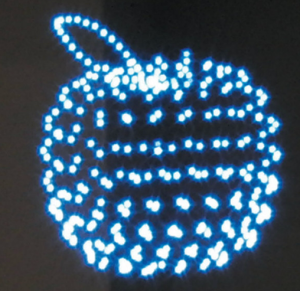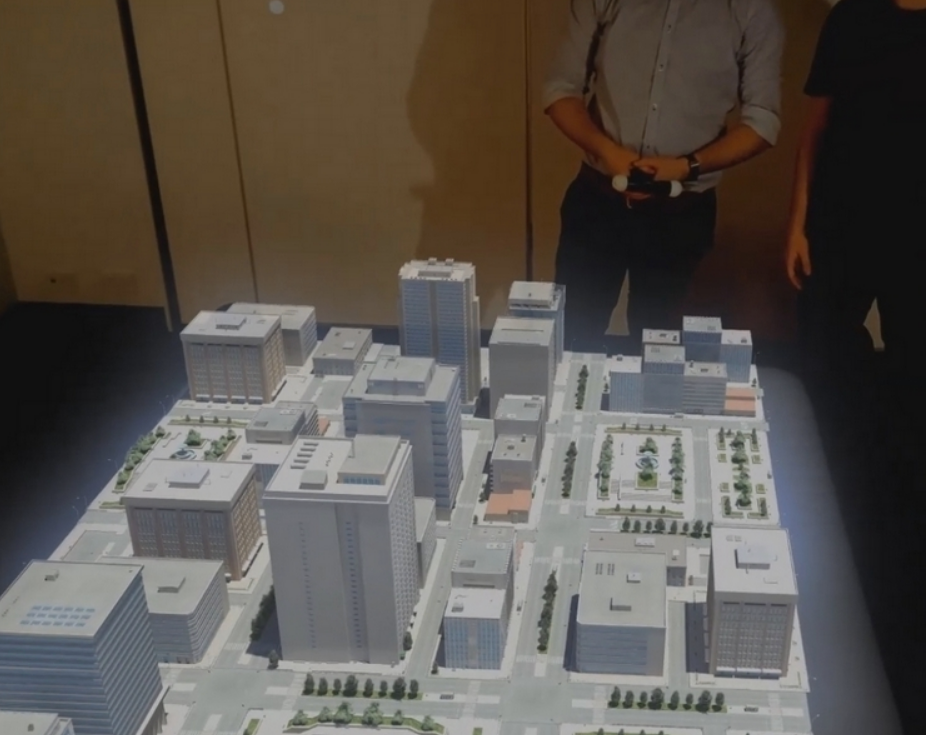Edward Lewis
Today, our advanced technology consists of virtual reality (VR) and augmented reality (AR). It is used for everything from video games, educational tools to troubleshooting operations. Companies like Microsoft are leading the way for commercial applications in the VR with their Hololens goggles that seem to project floating operational panels and troubleshooting diagrams that can be shared with managers and technicians simultaneously. (Microsoft Hololens, 2015) But what is the next evolution in this technology? The answer is holographic technology. This technology has the capabilities of presenting data and immersing the learner with an authentic environment.
In this chapter, some of the current technology will be presented. First it is important to review the definition of a hologram since it is used differently throughout the chapters and by the sources of the information. According to Merriam-Webster Dictionary, a hologram is “a three-dimensional image reproduced from a pattern of interference produced by a split coherent beam of radiation (such as a laser)”. (Merriam-Webster Dictionary, 2022) So many of the technologies that are mentioned below do not produce a true volumetric 3D image but create the illusion of a 3D image. Most produce a 2D image that changes perspective as the viewer moves. For the purpose of this book, though, the perception of a 3D image will also be included in the definition of a hologram since the human mind cannot tell the difference. Additionally, the purpose of the hologram from an educational standpoint is to enhance the viewer’s experience of a subject or topic by presenting a real or seemingly real environment.
Video 1: Advanced Holograms View on YouTube.
In chapter two, various types of holographs technics were described. Some of the future advancements in holographic technology included reflection and transmission advances. Future hologram technologies are being developed at an incredible pace. The amazing part is the variety of technology used to display the holograms or projections. Here is a list and description of some of my favorite hologram technologies. Video 1 includes that hologram technologies highlighted below plus some other similar types of technologies.
- Pepper’s Ghost. A concept from the 16th century that was by introduced by Henry Dircks to Britain and updated in the 1860’s by John Pepper who directed an arts and science gallery. It was later patented by Dircks and Pepper in 1860’s. Figure 1. shows how an actor hidden from the audience, has his image reflected from a mirror in front of him to another mirror on the stage. The mirror on the stage is not visible by the audience thus the holographic illusion of a ghost. (Burdekin, 2015)

Figure 1. Schematic of Pepper’s Ghost Illusion. Photo from
- Digital Holographic Tabletop. This hologram technology allows uses to view objects from any side. The table can be used with computer, laptops and mobile devices. It works by projecting four images of the object to the sides of the prism. This gives observers the feeling that they are looking at a 3D image. (Prindle, 2015)
Video 2: Holus: The Interactive Tabletop Holographic Display retrieved from Kickstarter.
- No-Logram. This holographic technology utilizes 2D projection paired with motion detection to create spectacle light images. The image adjusts based on the location of the primary viewer who is tracked by the motion detector. It was developed by the French artist Joanie Lemercier after seeing a mixed reality demo at Theoriz, a French technology company that uses mixed reality with motion detection. (Wehner, 2017)
Video 3: No-Logram video created by Joanie Lemercier and downloaded from Vimeo.com at Projections experiments – June 2017 on Vimeo.
- AB Laser Plasma Holograph Techtacular. This technology forms a volumetric image with plasma laser bursts to display points in the air. This was different from other hologram technology because it didn’t require water, smoke or objects to bounce images off of to create the design.

Figure 2: Aerial Burton Laser Plasma Holograph from Pocket-Lint.com
- Fan Holograms. These fans have multiple fan blades that have LED RGB lights on them. The light pixels light up at certain times when the fan is spinning which provides a 3D hologram illusion to the observer. This type of hologram is not a volumetric display but because the fan blades are spinning fast, it can appear to be floating in air. (Salo, Virolainen & Saarela, 2019)

Figure 3: Fan Hologram from https://www.aliexpress.com/item/32942860178.html.
- InFORM. This was created by Daniel Leithinger and Sean Follmer, two MIT PhD students. project in which the device produces 3D shapes of object by using a system of 900 motor-driven columns arranged on a grid-like table. The columns rise up, out of the grid to replicate real-world references in the three-dimensional space above the board, allowing a user to physically transfer actions from one location using a sensor to the table at another location. This could have applicability to field like construction or architecture. (Orf, 2013)
Video 4: MIT’s inFORM dynamic shape display. Video downloaded from inFORM – Interacting With a Dynamic Shape Display on Vimeo.
- Voxon VX1. Voxon Photonics is an Australian company started in 2009 that has developed the 3D volumetric devices for businesses and education. The table itself produces a billion points of light in over 1,400 slices of images to generate the 3D images. Voxon plans to develop their products for all industries. Currently, there only product is the holographic table and associated application software. (Voxon Photonics, 2022)
Video 5: Voxon VX1 table. Video retrieved from The future of 3D display technology – YouTube.
- Euclideon Hologram Table. Axiom Holographic, formerly Euchideon Holographics, makes a variety of holographic products including the hologram table mentioned above. Other products include holographic rooms and tables that use mixed reality. This technology is a display table with a dome over it similar to Voxon. It displays 3D images in a true volumetric perspective. People can walk around the table and see the object’s displayed from all angles. The company also produces tables that use augmented reality with headsets to manipulate objects on larger tables like the one in figure 4. In addition, this company has their own type of mesh material for projection displays which are popular at concert events. (Euclideon Holographics, 2022)

Figure 4: Euclideon Holographic Table. Image retrieved from Hologram Tables – Axiom Holographics (euclideonholographics.com).
There are numerous companies around the world that are working on holographic products. It is hard to determine which company is the best because they all have areas of specialty. There are endless possibilities for applying the holographic technology including entertainment, education, military and business. As these technologies advance, they will become even more a part of our everyday lives. After looking at these technologies, can you imagine yourself using them?
References:
Edwards, L. (2014). Holograms are finally here: Plasma lasers used to create images in mid-air. Pocket-Lint. Retrieved from Holograms are finally here: Plasma lasers used to create images (pocket-lint.com).
Euclideon Holographics. (2022). Retrieved from Hologram Tables – Axiom Holographics (euclideonholographics.com).
Kaleida. (2022). Retrieved from Holonet | Revolutionary Hologram Gauze | Kaleida (wearekaleida.com)
Kickstarter.com. (2022). Holus: The interactive tabletop holographic display. Retrieved from https://v.kickstarter.com/1650392460_e6ed7b5fee42fe858cbe9adae5c31d625d5f9bcd/projects/1862722/video-551700-h264_high.mp4.
Hologram definition. (2022). Merriam-Webster Dictionary. Retrieved from Hologram Definition & Meaning – Merriam-Webster.
Interactive Holograms. (2021). Ikin. Retrieved from Interactive Holograms – IKIN (ikininc.com)
Microsoft HoloLens – Transform your world with holograms: (Video (2:02), January 12, 2015) https://www.youtube.com/watch?v=EOJyRJKqukc.
Moura, F. T. (2021). 17 Companies Developing Holograms for Live Experiences – LiveInnovation.org. LiveInnovation.
Orf, D. (2013). How It Works: MIT’s inFORM Dynamic Shape Display. Popular Mechanics. Retrieved from How It Works: MIT’s inFORM Display (popularmechanics.com).
Prindle, D. (2015). This tabletop holographic display pulls media from your smartphone and makes it 3D. Digital Trends.
Salo, P., Virolainen, M. & Saarela, M. (2019). Holographic fan case study. HAMK. Retrieved from Holographic fan case study – HAMK Unlimited.
Wehner, M. (2017). These glasses-free ‘holograms’ are as close to the real thing as we may ever get. BRG. Retrieved from These glasses-free ‘holograms’ are as close to the real thing as we may ever get (bgr.com).
Voxon Photonics. (2022). Retrieved from Who We Are – Voxon Photonics.
